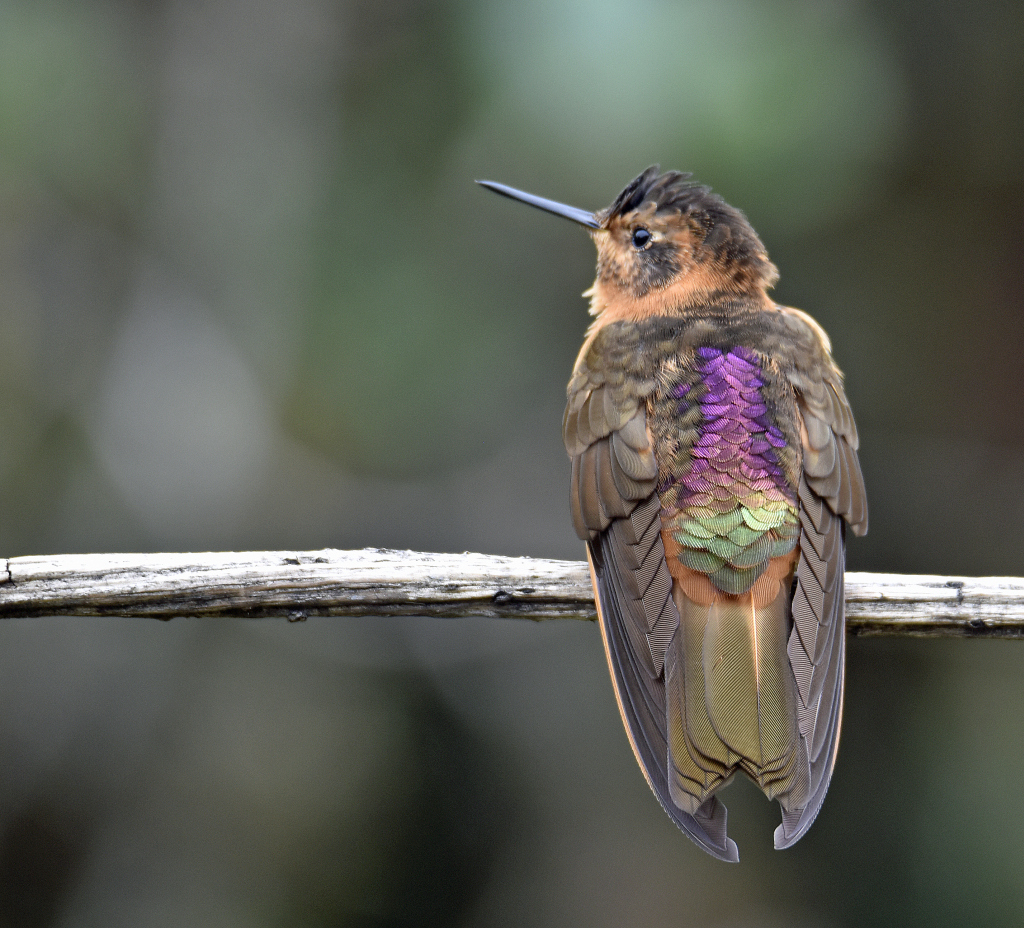
Another look back at my trip with WINGS Birding Tours to Ecuador’s Mindo and the Northwest Andes: Yanacocha Biological Reserve, 30 Jan 2023.
19 February 2023
On our first full day of birding in Ecuador we traveled to another world on the slope of Pichincha Volcano. All eight of us had arrived from home elevations of 50 to 2,400 feet above sea level, yet within an hour and a half of breakfast we emerged from the van at 11,500 feet (3500 m). The birds at Yanacocha Reserve were spectacular and unaffected by thin air.
The feeders near the parking lot were dominated by a few belligerent shining sunbeams (Aglaeactis cupripennis, above), but a feeder in the shadows attracted a sword-billed hummingbird (Ensifera ensifera), the only bird in the world with a beak longer than its body. He uses it to sip from passionflowers and hanging trumpet flowers.
To see more hummingbirds and other rarities we walked the Inca Road 4+ miles round trip. This screenshot from Google Earth shows that the ancient road remains at the same elevation by winding along the slopes. There were no steep grades but the thin air made rapid walking unpleasant. Fortunately we stopped often for birds.
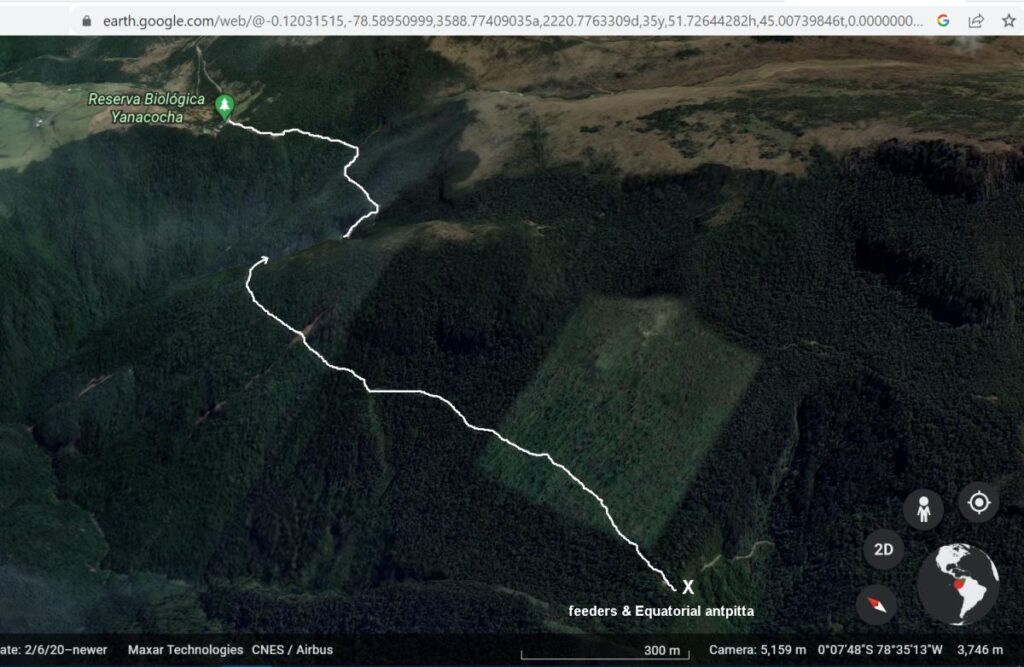
Black-breasted puffleg (Eriocnemis nigrivestis)
The Best Bird of the day, and a Life Bird for our guide Jon Feenstra, was an endangered hummingbird with an extremely restricted range. This female black-breasted puffleg (Eriocnemis nigrivestis) is one of no more than 250 remaining in the wild. She stopped us in our tracks at a bend in the trail. Two photos of the same bird.

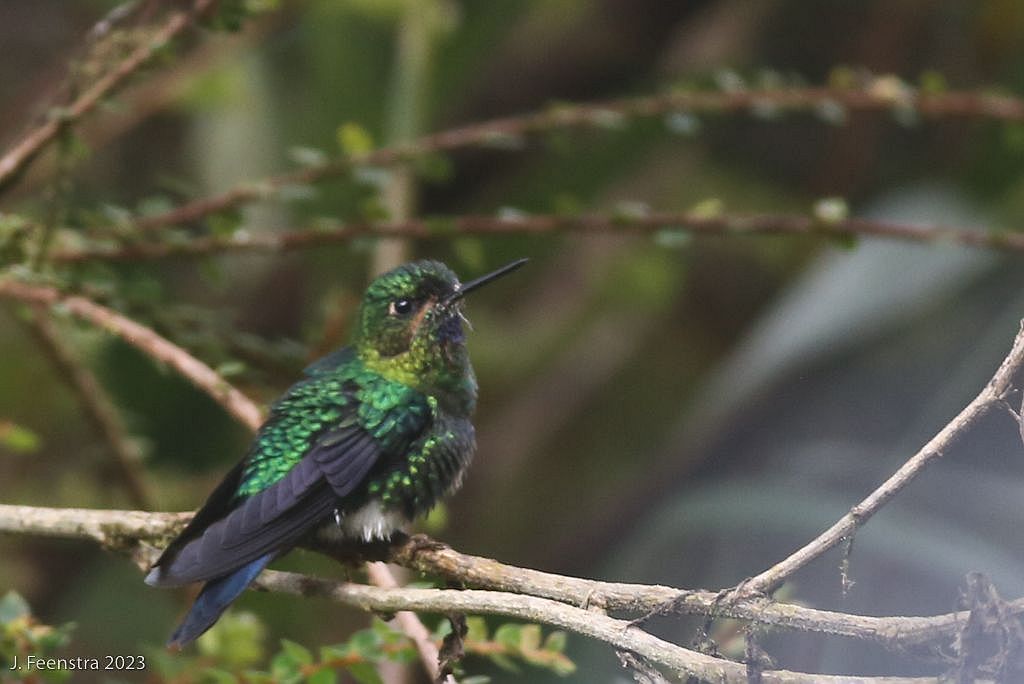
Our walk’s destination was a cluster of feeders with five more species of hummingbirds, two species of flowerpiercers, and no shining sunbeams. Just beyond the feeders a member of the Reserve staff showed us a bird we never expected to see.
Equatorial antpitta (Grallaria saturata)
Antpittas of all kinds are easy to hear but rarely seen.
We lined up to wait as the “bird whisperer” whistled the antpitta’s song and left worms at the feeding zone.
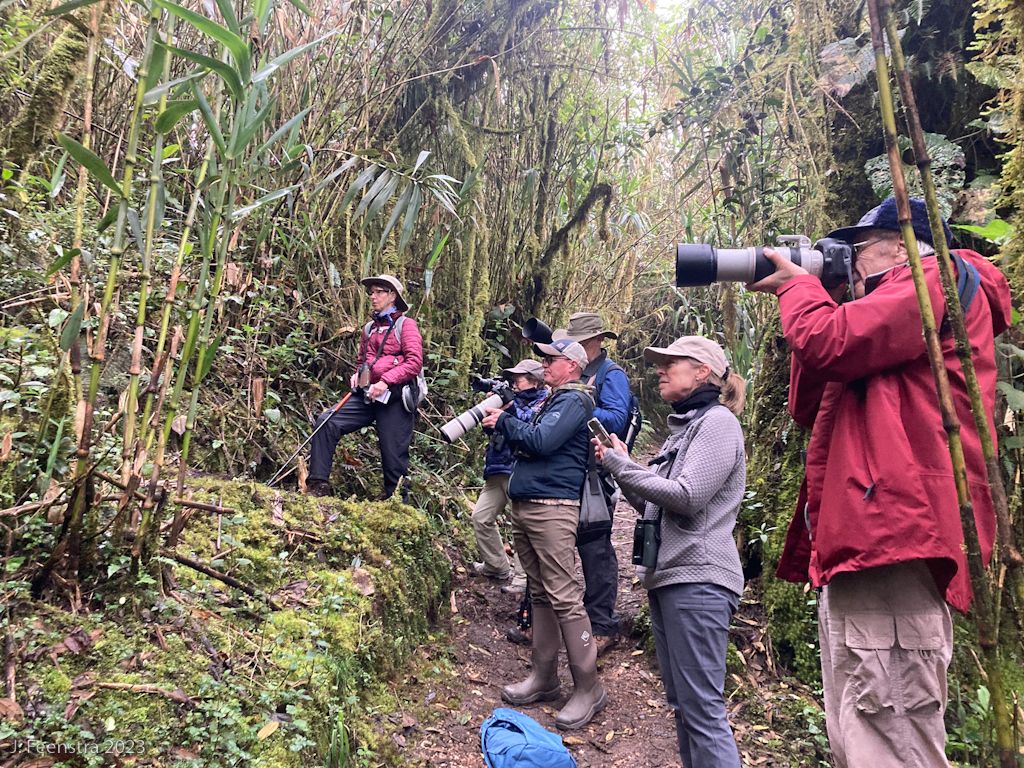
The bird appeared in the shadows and walked into dim light.
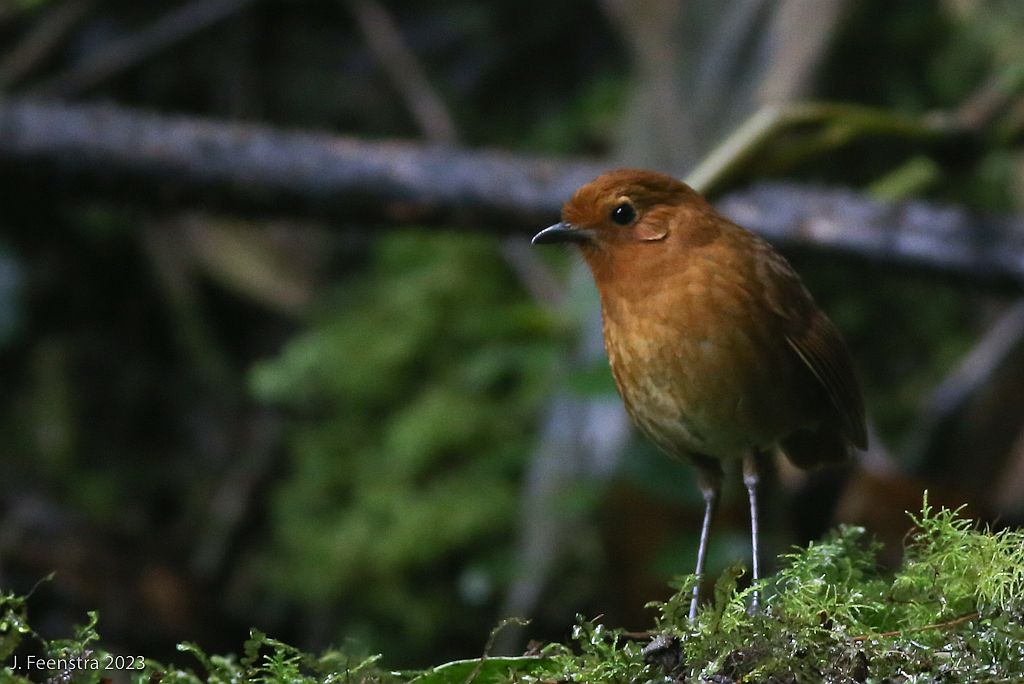
The field guide said it was a “rufous antpitta” but the book is outdated. In 2020 the rufous antpitta was split into 13 similar species. The 13 species have white backgrounds below; equatorial antpitta outlined in magenta.
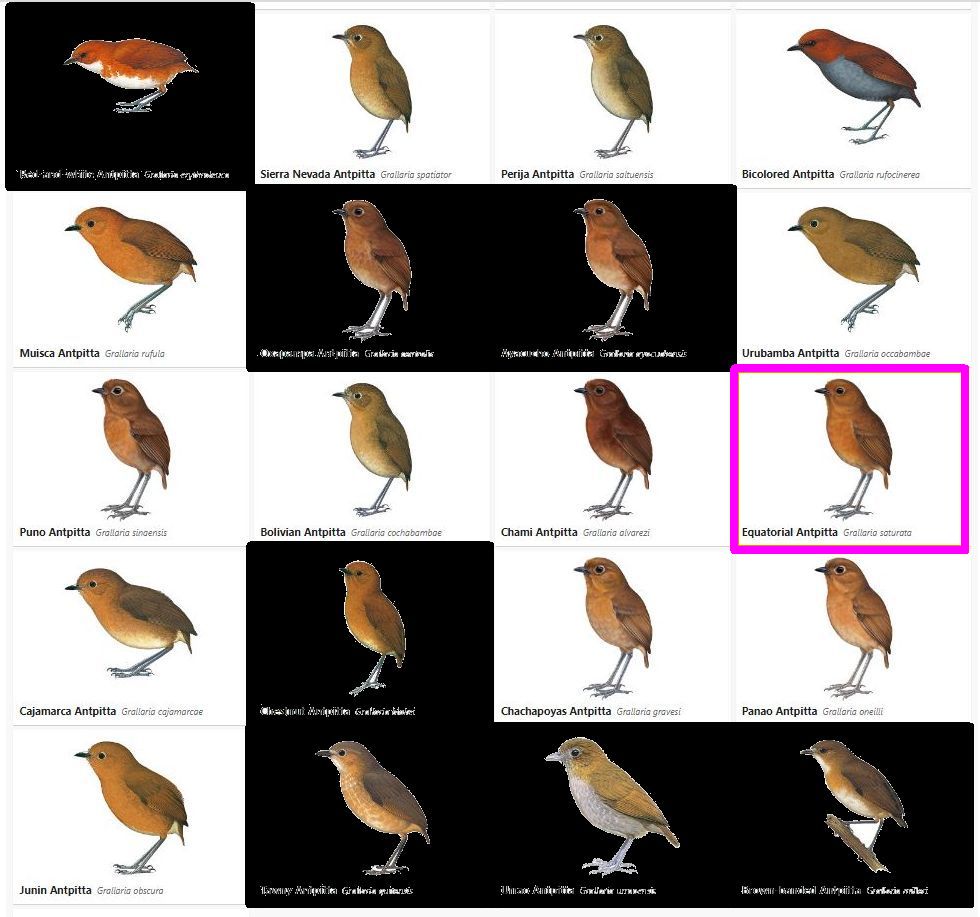
Happy with our morning adventure we hiked back to the parking lot, becoming more accustomed to thin air.
(photos by Mary Eyman, P.B.Child and Jon Feenstra. Screenshots from Google Earth and Birds of the World)


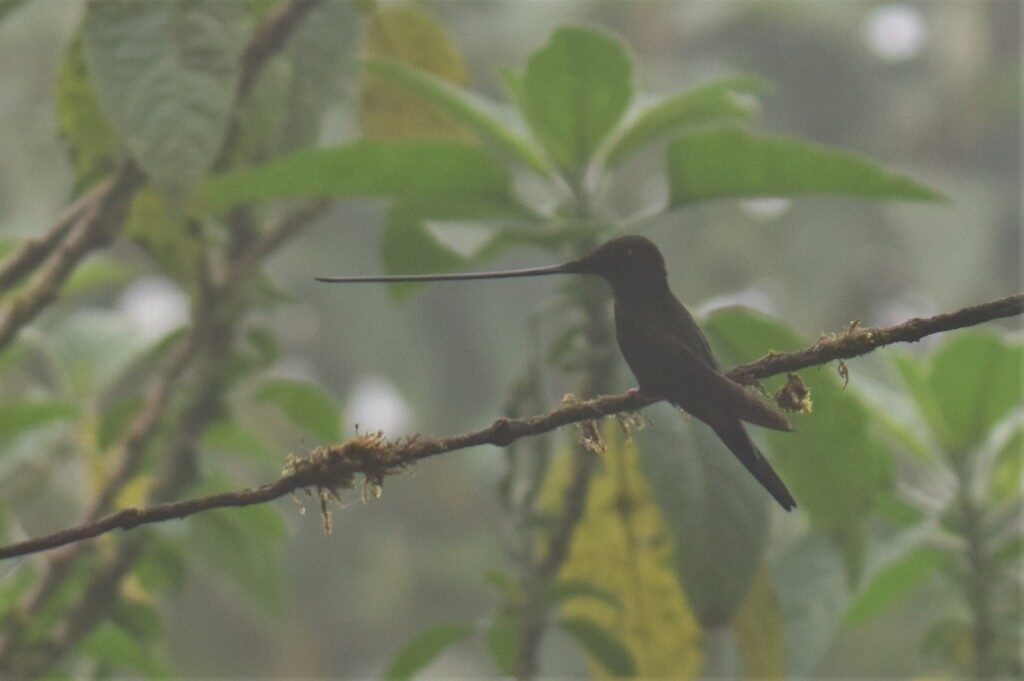
WOW. Just WOW. Exotic birds, 4 mile walk at altitude, excellent photos, a bird species that is now 13 bird species (is that a DNA decision?). Did you train for the altitude? You can walk wearing masks to simulate low oxygen.
I took deep breaths and kept on going. It seemed to help.